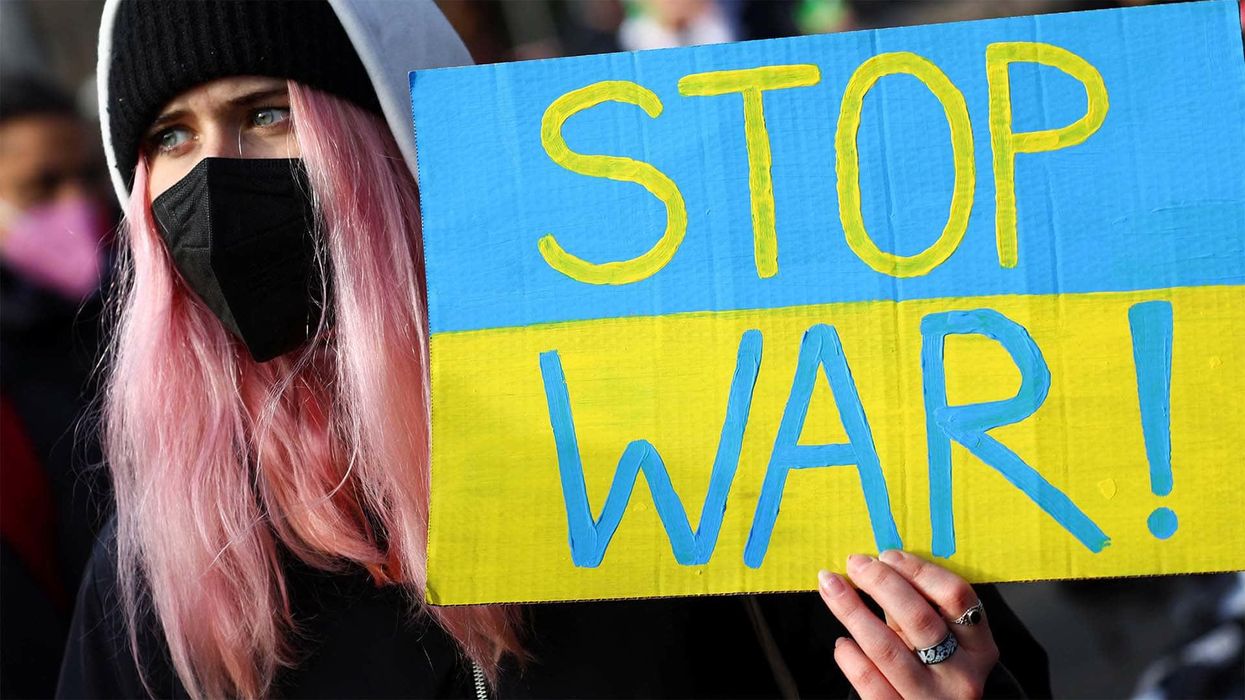Last night it was announced that immediate family members will be able to join Ukrainians settled in the UK as they flee the Russian invasion.
The government had previously faced intense criticism over failing to relax the visa requirements for Ukrainian nationals earlier this week. It followed a spat between Home Secretary Priti Patel and Labour.
In a statement on Sunday, Downing Street said the measure will “benefit many thousands of people who at this moment are making desperate choices about their future”.
According to the government website, family migration visas are free for family members of British nationals who typically live in Ukraine. This includes spouses, unmarried partners, parents for those under 18, a child under 18, and adults who require care.
Sign up to our new free Indy100 weekly newsletter
However, notable exclusions include siblings, adult children, and parents.
Meanwhile our neighbours in Ireland scrapped visa requirements for Ukrainians and the European Union last night announced that Ukrainian refugees would be hosted for three years without the need to apply for asylum, regardless of whether or not they have any family connections in the EU member states.
First Minister of Scotland Nicola Sturgeon last night tweeted that the Home Office should lift all requirements for Ukrainians entering the UK. “Anything less is unacceptable,” she added.
Earlier she wrote: “Give entry now on humanitarian grounds and sort paperwork later”.
Here\u2019s the guidance on PM visa announcement.\nRestricting to family members too limited & defining \u2018family member\u2019 so narrowly compounds this.\n@ukhomeoffice must lift visa requirement for all Ukrainians seeking entry to UK as other countries doing. Anything less is unacceptablepic.twitter.com/qtcIculjIF— Nicola Sturgeon (@Nicola Sturgeon) 1646002505
To illustrate the point that we should take in more refugees, we’ve pulled up some maps that show how empty the UK is. The UK is actually covered in greenery. As a staggering report from the BBC found, only 5.9 per cent of the land in the country is actually built on.
The lowest proportion is found in Scotland, where only 2.1 per cent of land is built on.
This has been further visualised, in graphics tweeted by an expert.
Conrad Hackett, a senior demographer and associate director at the Pew Research Center, tweeted:
He followed up the map with a thread of tweets detailing the same data for different countries.
As some people pointed out, there are issues with presenting the map purely as unexplored land for building:
Some also complained that their areas were incorrectly marked as uninhabited:
Learn more aboutThe Independent's Refugees Welcome campaign.
Have your say in our news democracy. Click the upvote icon at the top of the page to help raise this article through the indy100 rankings.














